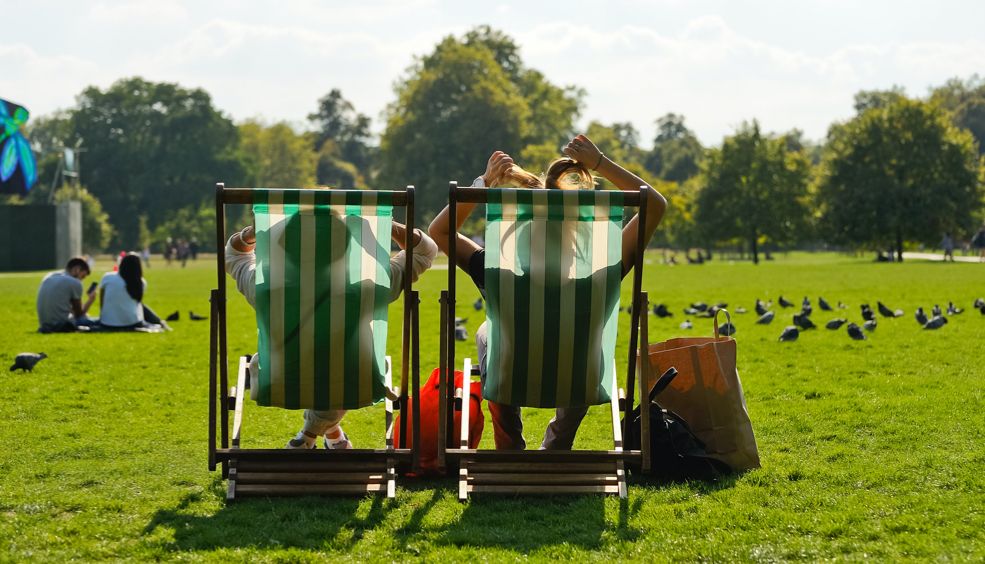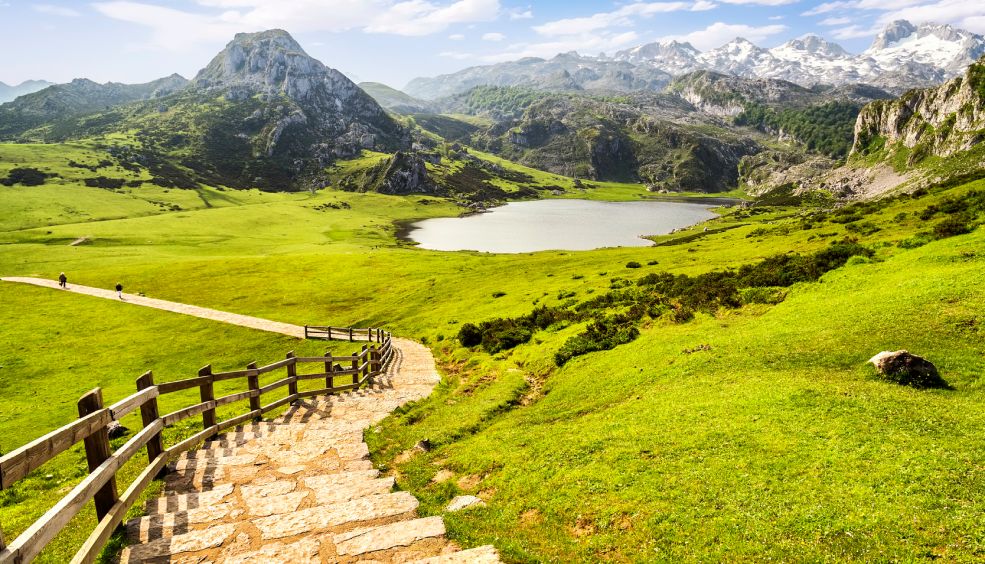Eight things to do with kids in London
Fun is guaranteed when you come to London with the family. Museums, themed cafés, endless adventures, toy shops, attractions and more.
more info8 nature + gastronomy plans in Asturias. Delicious!
An excursion and then a feast? Or maybe the other way round? In Asturias you'll find scenic hiking trails and mouth-watering dishes.
more infoAsturias at Easter: discover the best things to do!
Festivals, processions, gastronomy, nature, cities, art and culture... You'll find all this and much more at Easter in Asturias!
more infoBerlin, a prismatic city
By Monia Savioli from ilTurista.info
Berlin: Young, lively, trendy but cheap, organized, linked to an important past which doesn’t forget and doesn’t want to. You can’t define the city of Berlin just listing a limited number of adjectives and characteristics. That would restrict its beauty and what the city can offer to people.
Vueling launched the route Florence-Berlin on March, the 22nd increasing its new offer from Florence with furthers routes to London Heathrow, Copenhagen and Hamburg providing 160.000 new seats in addition to the already available flights to Barcelona, Paris and Madrid. There is an efficient bus shuttle service that connects Florence train station to the airport. From the train station, you can reach the airport in 20 minutes and by an about 90 minutes flight you arrive at the Tegel International Airport of Berlin.
The only clashing point is that the German airport is not connected directly to the city by underground, although the net is constantly increasing. It’s possible to reach the nearest station by taking a bus from the airport. You can ask for more information about the bus within the airport, where people speak English if you don’t know German (bus and taxi drivers often speak only German). If you want, you can also take a taxi since rates are cheaper than the Italian’s ones. The bus that brings you to the city is the 128 and leads to the “Kurt-Shumacher-Platz” underground station and the course lasts about 15 minutes. Once arrived to the underground station, you can use the same ticket to reach Friedfrichstrasse, the core of Berlin and the shopping road par excellence. There, you can take a room at the Melia Hotel, just close to Spree river and to the Metropol Theatre. Friedrichstrasse is a strategic point to chance upon the famous “Unter den Linden” boulevard, going into the core of the city visiting the main Berlin places that you should see in a 2-days-trip.
If you prefer walking, you can also visit the city with your own feet or you just ride the several bikes for rent. There are also buses for scenic tour working up to 6 p.m. that let you get on and off to visit the main important places.
One of these places, is “Charlie”, at the Friedrichstrasse. It originally was a checkpoint between the Mitte and Kreuzber districts. Mitte belonged to the East Berlin, run by Soviets in the past and Kreuzber to the West side of Berlin, run by Americans. The name of the place, Charlie, is pronounced as the third letter of NATO phonetic alphabet after “Alfa” and “Bravo”. Nowadays Charlie checkpoint is a bar where you can taste delicious drinks or drinking beer sitting on beach chairs with you feet on the sand. The headquarter of the old Gestapo is on the Niederkirchnerstrasse where you can find few empty tiled buildings. It’s situated next to a portion of the Berlin’s wall that is ruined and constantly reduced because visitors often steal pieces of wall as souvenir. In that place now there is a permanent photography exhibition called“Topography of terror” about Nazism. So it’s evident how the old and the young Berlin are living together, to bearing in mind a past that no one can’t forget, fixing it through feelings felt due to the almost holy silence you can find in those places as a sign of respect.
These are the same feelings and sensations you can feel within the Holocaust Memoirs, in the Cora-Berliner Strasse, where there are 2.711 anonymous grey stones with an irregular shape that are arranged within a field characterized by several bumps that gives you the feeling of a dark choking and light-living feeling at the same time.
The East Side Gallery, an almost 2 kilometres of the Berlin’s Wall on the Mulenstrasse (ex East Berlin) is now the longest open-air art gallery in the world and show you several visions about the years of the split of Berlin. The murals realized by international artists offer alternative points of view by illustrating characters and symbolisms of that period as the Trabant, the famous old Berlin car, drawn as it would break down the wall.
For the aficionados, it’s also possible to rent a “Trabi” to drive around the city or take one of the odd vehicles situated along the Brandenburg Gate, the symbol of a reunified Germany and the access gate to the Tiergarten. This is a former shooting ground of the royal palace where you can find the Victory Column and the famous zoo.
There are also several nice flea markets along the boulevards where you can buy an endless quantity of stuff during the weekend, from jewelleries to art masterpieces or, for instance, mother-of-pearl-made spoon for enjoy your caviar. Is not all. Berlin is also the city of museums: from the biggest Hebraic museum in the world to the Egyptian museum, the National Art Gallery and several other ones.
Berlin is also the city of the big palaces, churches’ ruins as the Kaiser Wilhelm Gedachtniskirche, whose ruins keep the recollection of the Second World War bombing alive. At least, but not the last, Berlin is the city of the shopping centre as the Come KaDeWe, “Kaufhaus des Westens”: the most famous shopping mall in Germany and the biggest one in Europe with 60,000 cubic meters that are branched in 7 sector floors for products except the last one where you can eat at the self service restaurant. Other way, downstairs you can eat in several buffets as the one managed by one of the most famous international chef, Paul Bocuse. There is also a Lafayette store section. But the real fun, actually, is getting lost among the little shops and the street markets. Berlin offers also a lot of night bars, international top level restaurants, pubs, night clubs and alternative locals assuring fun to every kind of target of people.
Thrill-seeking people can even try bungee jumping from the top of the Hotels in Alexander Platz. In order to finish your trip, you can have a long and relaxing boat ride across the Spree river from where having a wide vision of the German capital to realize that Berlin is not just a touristic destination but a real city with its beautiful places and also its difficult realities as homeless people sleeping in sleeping bags along the streets of this great but cold city.
Por Monia Savioli de ilTurista.info
Why not take a trip to Berlin? Have a look at our flights here!
more info




